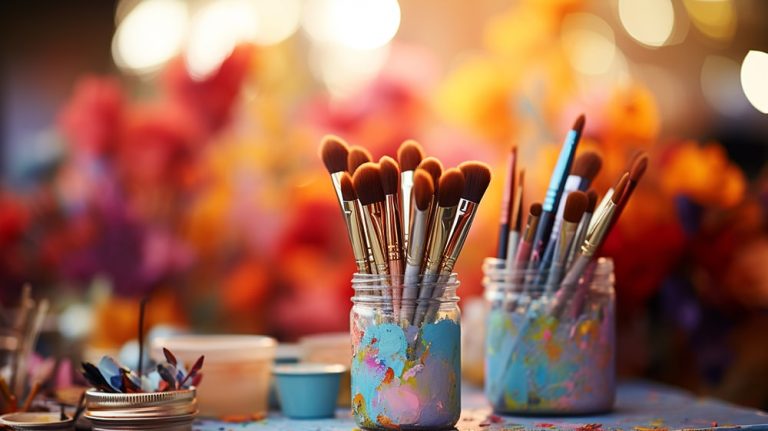Sustainable Crafting: Tips for Eco-Friendly Projects
Crafting is a wonderful way to express your creativity, but it can also have a significant environmental impact. With the growing concern about climate change and the need to reduce our carbon footprint, it’s more important than ever to consider sustainable practices in all aspects of our lives, including crafting. In this blog post, we’ll explore some tips for eco-friendly crafting and provide specific examples to help you get started.

Reduce, Reuse, Recycle
The three R’s – reduce, reuse, and recycle – are a great place to start when it comes to sustainable crafting. Here are some ways you can incorporate these principles into your projects:
Reduce
- Use natural materials: Opt for materials that are sustainably sourced and have a lower environmental impact, such as wood, clay, or wool.
- Use scraps: Before buying new materials, see if you have any scraps left over from previous projects that you can use.
- Buy in bulk: Purchasing materials in larger quantities can reduce packaging waste and save you money in the long run.
Reuse
- Upcycle: Give new life to old items by turning them into something new. For example, you can turn an old shirt into a reusable shopping bag or an old wine bottle into a vase.
- Borrow or rent: Instead of buying new tools or equipment, see if you can borrow or rent them from a friend or a local craft store.
- Use reusable supplies: Opt for reusable supplies, such as cloth napkins or beeswax wraps, instead of disposable ones.
Recycle
- Use recycled materials: Look for materials that are made from recycled materials, such as recycled paper or plastic.
- Properly dispose of waste: Make sure to properly dispose of any waste materials, such as batteries or electronics, to reduce environmental impact.
Sustainable Crafting Techniques
In addition to reducing, reusing, and recycling, there are several sustainable crafting techniques you can use to minimize your environmental impact. Here are a few examples:
Natural Dyes
Instead of using synthetic dyes, consider using natural dyes made from plants, fruits, or vegetables. Not only are they better for the environment, but they can also give your projects a unique and beautiful color.
Hand-Stitching
Hand-stitching is a slow and meditative process that can be both relaxing and rewarding. It also has a lower environmental impact than machine sewing, as it doesn’t require electricity or specialized equipment.
Upcycling Furniture
Upcycling furniture is a great way to give new life to old pieces and reduce waste. You can sand down and repaint furniture, reupholster chairs, or even build new pieces from salvaged materials.
Eco-Friendly Printing
If you’re creating prints or patterns, consider using eco-friendly printing methods, such as water-based inks or recycled paper. You can also use digital printing, which has a lower environmental impact than traditional printing methods.
Examples of Sustainable Crafting Projects
Now that we’ve covered some tips for sustainable crafting, let’s explore some specific examples of eco-friendly projects you can try:
Reusable Shopping Bags
Making your own reusable shopping bags is a great way to reduce plastic waste and save money. You can use old shirts, tablecloths, or other materials you have on hand. Simply cut the material into rectangles, sew the sides and bottom, and add handles.
Beeswax Wraps
Beeswax wraps are a sustainable alternative to plastic wrap and can be used to wrap sandwiches, snacks, or leftovers. To make your own, simply cut cotton fabric into squares, iron on a thin layer of beeswax, and let it cool.
Herb Garden
Creating an herb garden is a great way to grow your own herbs and reduce your carbon footprint. You can use old containers, such as tin cans or plastic tubs, and fill them with potting soil and herb seeds.
Natural Soap
Making your own natural soap is a great way to reduce waste and avoid harsh chemicals. You can use ingredients such as coconut oil, olive oil, and essential oils to create a gentle and nourishing soap.
Conclusion
Sustainable crafting is a wonderful way to express your creativity while also reducing your environmental impact. By incorporating the three R’s – reduce, reuse, and recycle – and using sustainable techniques and materials, you can create beautiful and eco-friendly projects. We hope these tips and examples have inspired you to try sustainable crafting for yourself.
Remember, every little bit helps when it comes to protecting our planet. By making small changes in our daily lives, we can make a big difference in the long run. Happy crafting!






